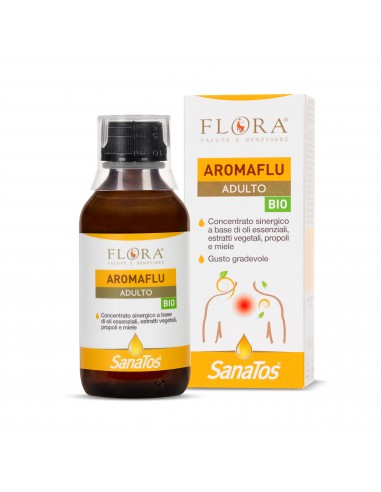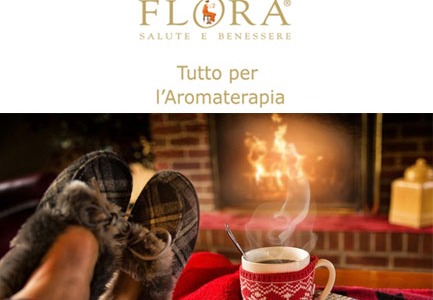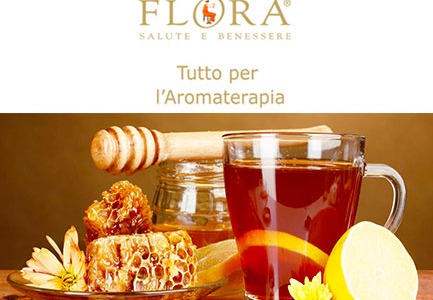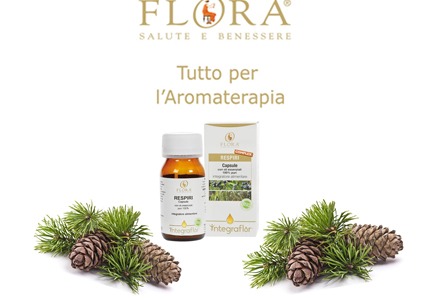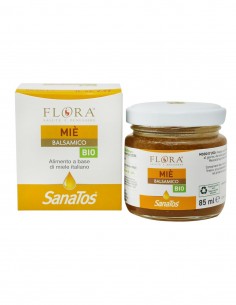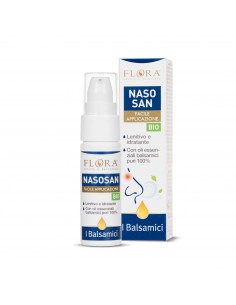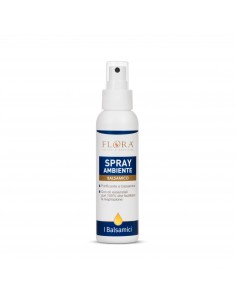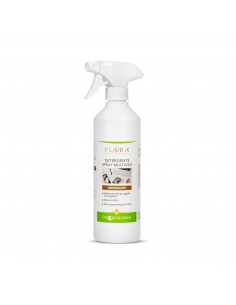Adult Aromaflu is a food supplement, a synergistic concentrate of 100% pure essential oils, plant extracts, propolis and honey.
The 100% pure essential oils of anise, clove, dwarf mint and myrtle contained in Adult Aromaflu promote a balsamic effect as well as a healthy nose and throat. In addition, the essential oils of anise and myrtle are helpful in promoting the fluidity of bronchial secretions.
The plant extracts of grindelia, echinacea, hedge mustard and mallow together with peppermint and cajeput 100% pure essential oils facilitate the function of the airways. In addition, the plant extracts of grindelia, hedge mustard and mallow have an emollient and soothing effect on the oropharyngeal mucosa, and the tone of the voice, while echinacea and acerola support the body's natural defences.
- Properties
- Fluidifying and soothing
- Form
- 30 ml
- Expiry
- 36 months from date of manufacture
- Does not contain
- Dyes, preservatives, synthetic substances
8019359022382
Recommended: take 5 ml of Adult Aromaflu 2-3 times a day. The synergistic concentrate can be taken pure, or diluted in water, fruit juices, herbal teas, etc. SHAKE BEFORE USE. The possible presence of suspensoids is due to the high concentration of active substances, and in no way affects the effectiveness of the food supplement. Food supplements should not be used as a substitute for a varied, balanced diet and a healthy lifestyle. In the event of inappropriate ingestion, do not induce vomiting and consult a doctor immediately. Keep out of reach of children under 3 years of age. Propolis may cause allergic reactions in rare cases. Do not exceed the recommended daily dose. Keep the bottle tightly closed, in a cool, dry place and away from light. Always store carefully in its container. The expiry date refers to the product correctly stored in unopened packaging. After opening store in the refrigerator.
CHARACTERISTIC INGREDIENTS PER MAXIMUM DAILY DOSE – 15 ml
- propolis (Propolis) 0.385 g
- echinacea (Echinacea angustifolia, H.) 0.575 g
- acacia honey (Mel) 6.695 g
- aniseed (Pimpinella anisum, L.) 0.02 g
- sweet orange (Citrus aurantium L. var. dulcis) 0.02 g
- cajeput (Melaleuca leucadendron L. var. cajaputi) 0.025 g
- dwarf mint (Mentha spicata, L.) 0.01 g
- cinnamon (Cinnamomum zeylanicum, G.) 0.02 g
- clove (Eugenia caryophyllata, T.) 0.005 g
- myrtle (Myrtus communis, L.) 0.025 g
- peppermint (Mentha x piperita, L.) 0.015 g
- lime (Citrus aurantifolia, C.) 0.015 g
- fructose 0.385 g
- malic acid 0.04 g
- grindelia (Grindelia robusta, N.) 0.575 g
- mallow (Malva sylvestris, L.) 0.575 g
- sage (Salvia officinalis, L.) 3.25 g
- wildflower honey (Mel) 5.74 g
- acerola (Malpighia glabra, L.) 0.19 g
- hedge mustard (Sisymbrium officinale, L.) 0.575 g
Honey* 65% (Mel); sage** (Salvia officinalis, L.), leaves, hydrolate; grindelia* (Grindelia robusta, N.) flowers, glyceric extract; propolis* (Propolis resina), dry extract; fructose; acerola* (Malpighia glabra L.) fruit, dry extract; cajeput* (Melaleuca leucadendron var. cajaputi, L.), leaves, essential oil; peppermint** (Mentha x piperita, L. ) whole plant, essential oil; dwarf mint* (Mentha spicata, L.) whole plant, essential oil; clove* (Eugenia caryophyllata, T.), cloves, essential oil; cinnamon bark* (Cinnamomum zeylanicum, G.) bark, essential oil; aniseed* (Pimpinella anisum, L.) seeds, essential oil; sweet orange* (Citrus aurantium L. var. dulcis) peel, essential oil; myrtle* (Myrtus communis, L.), leaves, essential oil; lime* (Citrus aurantifolia, C.) peel, essential oil; malic acid. Ingredients are sourced from controlled organic* and Demeter biodynamic** farms.
Did you know...
Propolis extract: the name propolis derives from the Greek πρόπολις, composed of πρό (pro) "in front of" and πόλις (polis) "city", i.e. "in front of the city"; this word, figuratively speaking, takes on the meaning of "defender of the city." The term was used by Aristotle and Pliny the Elder in ‘Naturalis Historia’ to refer to the resin processed by bees, who use it to defend their city (the hive) from dangers such as disease and predators. Propolis is one of the oldest used natural substances. As early as ancient Egypt, it was used for mummification (often referred to by the generic name of resin). In Ancient Greece (in the times of Aristotle, Galen of Pergamom and finally the Persian Avicenna), it was used externally as a healing agent for wounds or sores. The use of propolis is widely documented among numerous cultures around the world. The Incas used it to treat febrile illnesses, while in Russia it was a remedy for all problems of the oral cavity, used in cases of caries and inflammation. Propolis was one of the remedies of choice until the 18th Century, when it was used to treat respiratory inflammation, but also sores, insect bites, etc. It then fell into disuse, but has regained its value in the herbalism as a valid adjuvant to promote the functioning of the respiratory tract.
Echinacea extract: was already used by Native Americans and North American shamans for its many properties. It was considered to be a magic herb because it was used to treat wounds, burns, snake and scorpion bites, sore throats, and all colds. The traditional use of echinacea in the prevention of colds was gradually consolidated first in America (in the early 1900s it was one of the best-selling cold and flu medicines), and then in Europe, mainly in Germany, where it was known to 'switch off' cold and flu symptoms if taken early.
Grindelia extract: Native Americans use this plant as a cough suppressant, and to soothe throat irritations; this function was later taken up by the Jesuits and the first settlers who exported the plant to Europe, encouraging its spread. Grindelia is recognized for its properties in both American and French pharmacopoeia. Currently, this plant is attributed an emollient and soothing action on oropharyngeal mucosa.
Mallow extract: thanks to its high mucilage content, it has an emollient effect, making the skin soft and moisturized, and an antioxidant effect, protecting the skin and mucous membranes.
Acerola extract: contains up to 25% vitamin C. Many properties are traditionally linked to this vitamin, especially in preventing station sickness, and reducing the duration of winter problems. Our bodies are unable to synthesize it, and so it is necessary to ingest it either with food or by taking supplements.
Hedge mustard extract: the term erysimum comes from Greek, and literally means 'save the song.' This tells us that it has been known since ancient times for its beneficial effects on the throat and vocal chords, as well as in all situations of aphonia and hoarseness; these properties have earned it the common name still in use today: Singers' Herb. As early as the Renaissance there is confirmation of the efficacy of this herb; it was not until the 16th Century that the botanist Jacques Daléchamps, a French physician and naturalist, officially classified it in ‘Historia Generalis Plantarum’ as the plant of orators, preachers, actors, teachers and singers. It is also used in Italy; the ‘Supplement to the Health Dictionary,’ dated 1784, praises its effect in cases of hoarseness, and a popular recipe, dating back to 1892, mentions it as a useful medicine in cases of aphonia.
Sage hydrolate: Sage is an aromatic herb whose use has been known since antiquity, with evidence of its use in therapeutic practices by the Egyptians, Greeks and Romans. Its properties were numerous, so much so that its name derives from the Latin salvus, which means 'saved.' It was used as an anti-hemorrhagic, for washing and disinfecting ulcers and sores, and in cases of coughs and sore throats. This last function in particular has been handed down through tradition: it is no coincidence that our grandmothers gargled with water and sage, or with sage decoctions (or even chewed the leaves directly) in case of mouth inflammations.
Honey: For many centuries it has been used as a highly nutritious food; in recent years, ancient ways of using it are being rediscovered. Very ancient documents in fact present honey as a powerful medicine. As early as 2000 BC there is evidence of honey being used as a medicine for external use. In ‘Ebers Papyrus,’ dated 1550 BC, honey was used in many preparations, including those for eye health, for application to wounds and abscesses, and even following surgery (such as circumcision). Even the 'Surgical Papyrus,' a papyrus of Egyptian medicine, mentions the use of honey as a wound dressing. In general, its use is found in all cultures where it is traditionally used for external use, but also for throat, respiratory and intestinal disorders.
Aniseed essential oil: this is a fundamental component of an ancient medicine called ‘Oil of the Four Winds,’ made up equally of anise, cumin, fennel and coriander oils, which is massaged into the abdomen to combat flatulence and meteorism. Grandmothers also used it as a remedy for dry, irritable coughs.
Cajeput essential oil: Kaji-puti means ‘white tree’ in Malay, indicating the white color of the bark of the tree from whose tops this essential oil is obtained. Originally from Vietnam, it only arrived in the West in the 18th Century following the Dutch conquest of the Moluccas. In its native land, cajeput essential oil has always been used in folk medicine for therapeutic purposes for infections, from intestinal to skin, or burned the branches to ward off contagions during epidemics. The oil was traditionally used by rubbing it on the forehead to combat headaches, ear and toothaches. It was also used to treat skin problems such as ulcers, acne, and psoriasis.
Dwarf mint and peppermint essential oil: Mint is one of the plants that have always played an important role, and to which numerous therapeutic and medicinal properties have been ascribed. The Egyptians and Greeks used it for its anti-nausea properties, and as a digestive aid. Pliny the Elder extolled its properties, saying that its fragrance was able to, "excite the soul and stimulate the appetite." The Salerno Medical School used it extensively as a vermifuge and even Pietro Andrea Mattioli, a herbalist from the 1500s wrote, "Mint has a certain bitterness in it, with which it kills worms". Its properties are so many and have always been appreciated that in the 11th Century Walahfried Strabo, a German abbot, theologian, and poet wrote: "If a man wanted to enumerate all the qualities, types and names of mint, he would also have to know how many fish swim in the Red Sea or how many thunderbolts Vulcan, the fire god of Lemnos, hurls into the air from the enormous mouth of Etna."
Cinnamon bark essential oil: known since ancient times as a rare and precious commodity, so much so that the Phoenicians sold it at a high price to the Greeks and Romans. Cinnamon was in fact considered a very important medicine and was, not surprisingly, used for auspicious gifts or offerings to the gods. In India in particular, cinnamon played an important role as a powerful antiseptic against infections, and epidemics. The Jews also used cinnamon in the composition of their holy oil, but also to make aphrodisiac and spicy perfumes. Finally, in the Middle Ages, it was customary to burn cinnamon and other spices to ward off epidemics; those who could afford it would carry a cinnamon wrapper to protect themselves from contagion.
Clove essential oil: Cloves, which are widespread throughout the Orient, were already used as an ingredient in perfumes, and as a medicinal principle in China 2,500 years ago. Strangely enough, their use for medicinal purposes was ignored by both the Greeks and the Romans, only to reappear in the West in the 4th Century when this spice was imported by the Arabs. The Salerno Medical School considered clove a true panacea, so much so that they recommended cloves to combat mental fatigue, and increase memory. It was in the 16th Century that cloves became even more important, as doctors recommended dissolving them in milk to 'increase the strength of Venus' – they were considered a powerful aphrodisiac! This activity was also exploited later on, so much so that in many medical notes of the 19th Century, cloves were considered to be an excellent remedy for impotence; they were also used as anaesthetics, especially for the oral cavity, but also to apply to a sore wound. The latter application is currently being used in dentistry where the main component of the essential oil from cloves, eugenol, is used as an anaesthetic to reduce the pain associated with toothache.
Myrtle essential oil: known for centuries for its beneficial properties helping with indigestion, respiratory problems, and urinary tract infections. In popular tradition, myrtle was used to prepare natural remedies for cystitis or gum disease.
Lime essential oil: In folk medicine, the flowers, juice and pulp of the lime are used to alleviate insect bites. It is also a good remedy for disinfecting the skin. In addition to infusions and herbal teas, it has the property of alleviating disorders and infections of the intestinal tract.
No reviews

